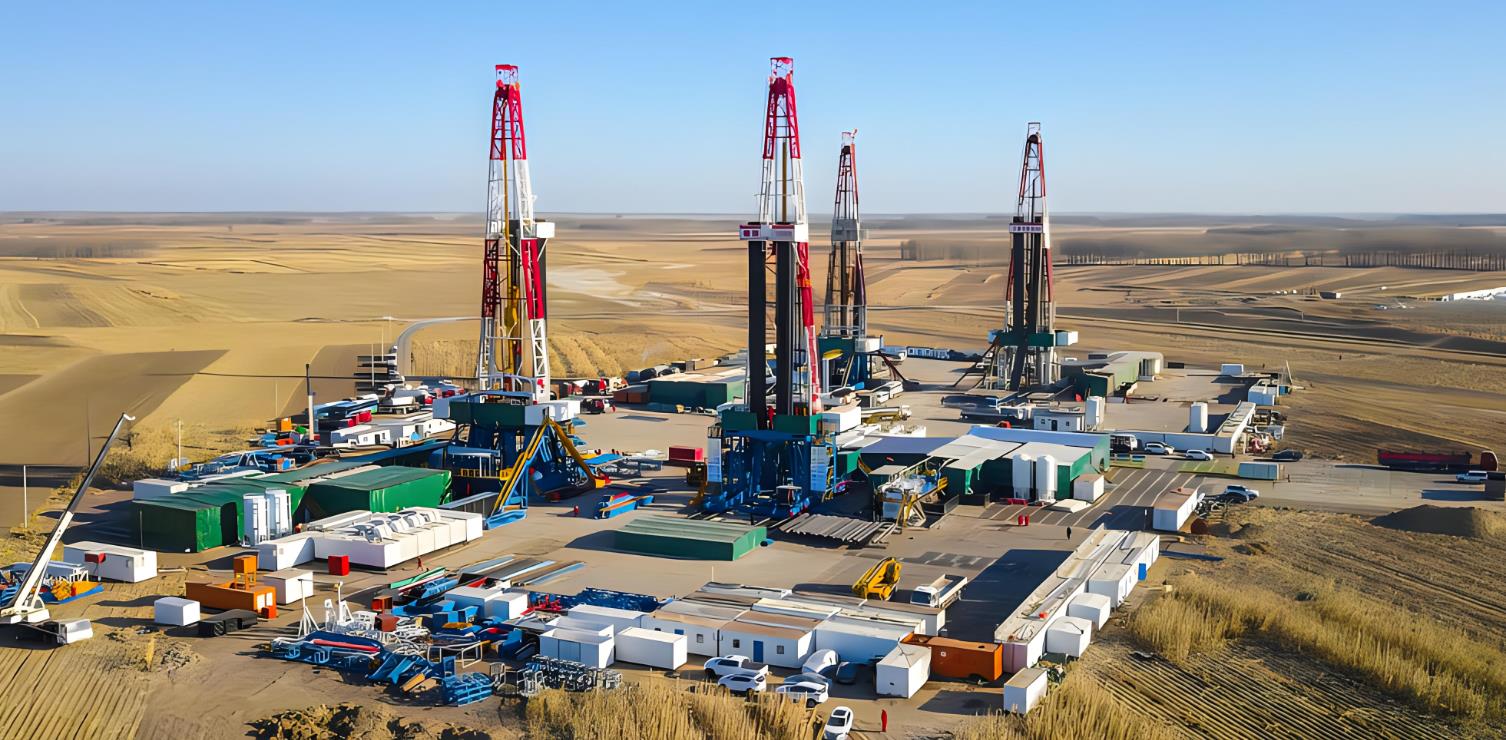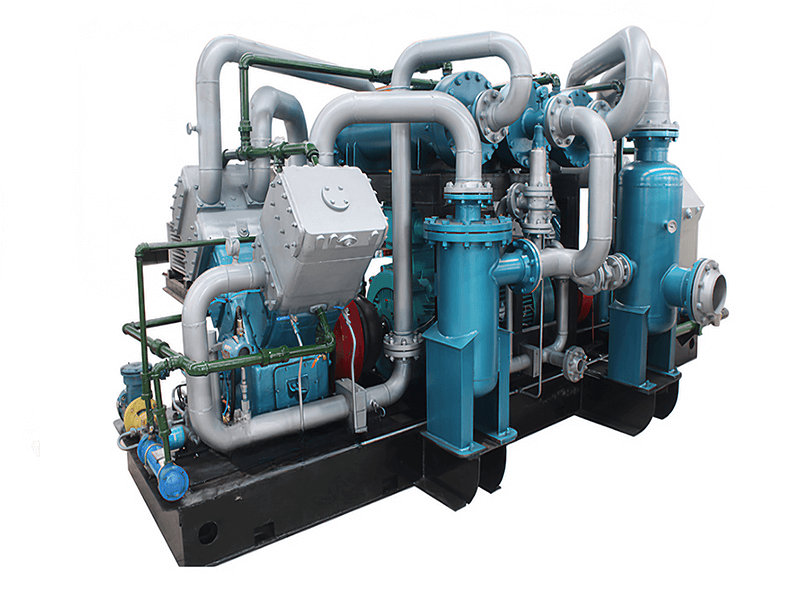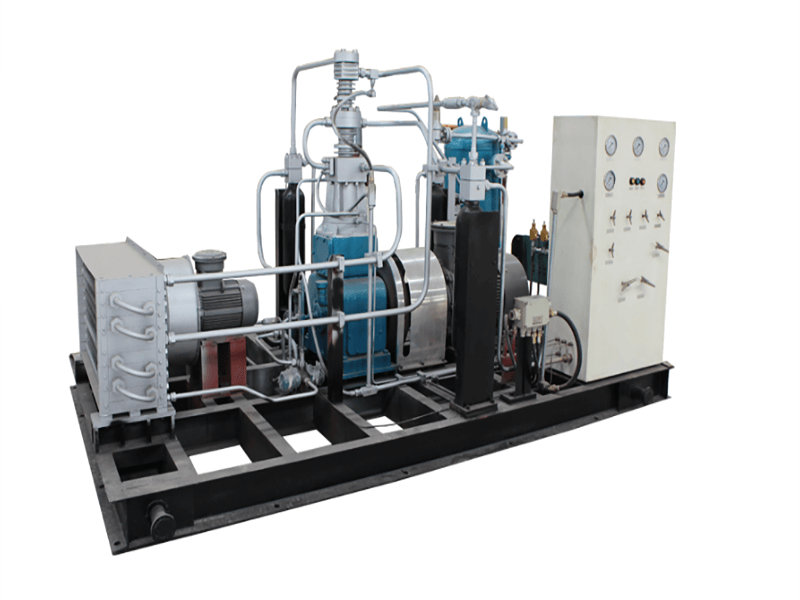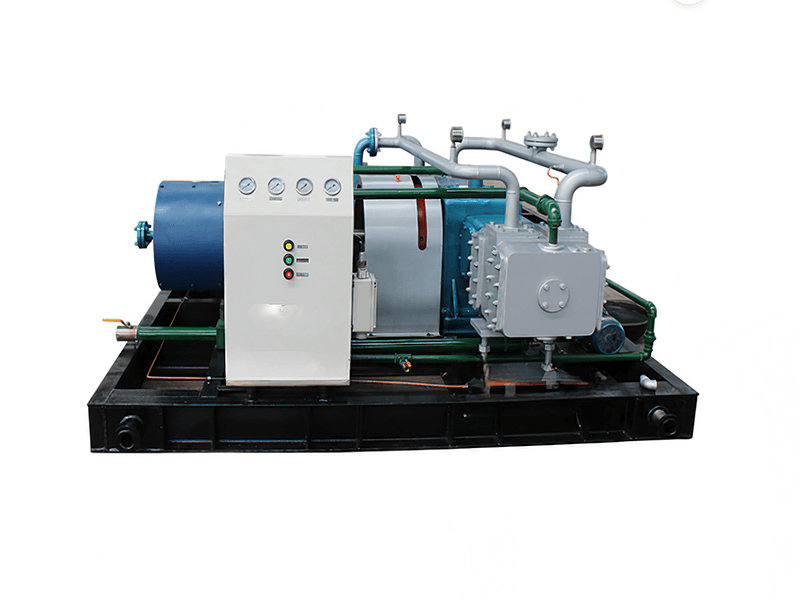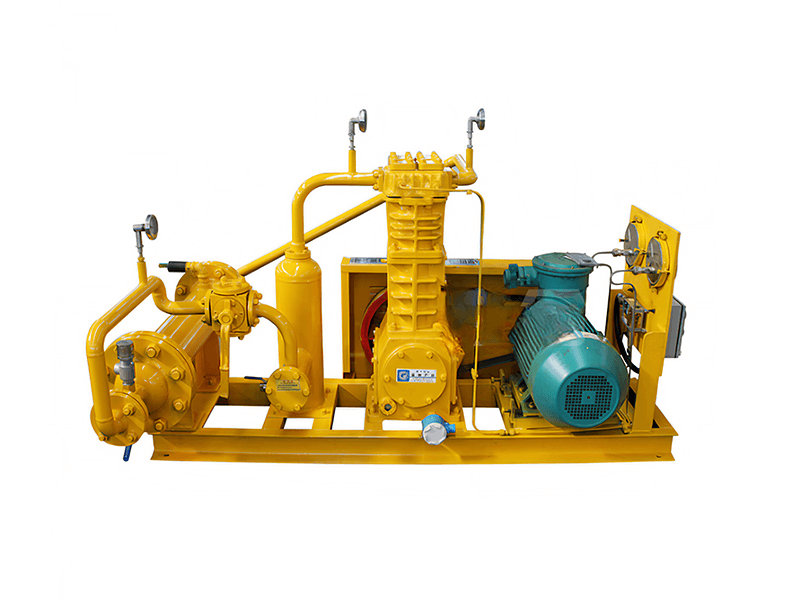The primary function of a natural gas compressor is to increase the pressure of the incoming natural gas, allowing it to be transported efficiently through pipelines or stored for future use. Here are some key functions of a natural gas compressor:
1. Gas Compression: The main function of a natural gas compressor is to compress the incoming gas to a higher pressure level. This is typically done to overcome pipeline friction, maintain the flow rate, and ensure efficient transportation of natural gas over long distances.
2. Pressure Maintenance: Compressors help maintain the desired pressure levels in natural gas pipelines. As gas travels through the pipeline, pressure drops due to friction and other factors. Compressors are used at strategic points along the pipeline to boost the pressure, ensuring that the gas reaches its destination reliably and with sufficient pressure for downstream applications.
3. Gas Gathering: In natural gas production, compressors are often used for gas gathering purposes. They are deployed at wellheads or collecting points to gather and compress the gas from multiple sources before it is sent to the main transmission pipelines.
4. Gas Injection: Compressors play a crucial role in gas injection processes. In some applications, natural gas is injected into underground reservoirs for storage or to enhance oil recovery. Compressors are used to increase the pressure of the injected gas, allowing it to be pushed into the reservoir effectively.
5. Gas Processing: Natural gas often contains impurities and contaminants that need to be removed before it can be used or transported. Compressors are employed in gas processing facilities to compress the gas for purification processes such as dehydration, sweetening, and the removal of impurities like sulfur compounds.

6. Gas Liquefaction: Compressors are used in the liquefaction of natural gas for transportation and storage purposes. By compressing the gas and reducing its temperature, it can be converted into a liquid state (liquefied natural gas or LNG) for more efficient storage and transportation over long distances.
7. Pressure Regulation: Compressors are utilized in pressure regulation systems to maintain the desired pressure levels in natural gas distribution networks. They help ensure a consistent and reliable supply of natural gas to end-users, such as residential, commercial, and industrial consumers.
8. System Balancing: Compressors also contribute to system balancing in natural gas networks. They help match the supply and demand of natural gas by adjusting the pressure and flow rates in the pipeline system, ensuring a steady and reliable supply of gas to various consumers.
9. Boosting Station: Compressors are used in boosting stations located along natural gas pipelines. These stations help increase the pressure of the gas to compensate for pressure drops occurring over long distances or in challenging terrain. Boosting stations ensure the gas maintains sufficient pressure levels for efficient transmission.
10. Fuel Gas Supply: Compressors are employed to supply compressed natural gas (CNG) or pipeline-grade natural gas as fuel for various applications. This includes fueling natural gas vehicles (NGVs), powering industrial processes, and providing fuel for gas turbines used in power generation.
11. Gas Conditioning: Compressors are utilized in gas conditioning processes where the natural gas needs to be treated to meet specific quality or processing requirements. This may involve compressing the gas for further processing, such as removing contaminants or adjusting the gas composition for specific applications.
12. Offshore Applications: In offshore natural gas production, compressors are used on platforms or floating production units (FPUs) to compress and transport the produced gas from the seabed to the surface processing facilities. Compressors play a critical role in maintaining the pressure and flow rates necessary for efficient offshore gas production.
13. Emergency Shutdown: Compressors may be equipped with emergency shutdown systems that automatically shut down the compressor in case of abnormal operating conditions or safety hazards. These systems ensure the safety of personnel and equipment during critical situations.
14. Remote Monitoring and Control: Modern natural gas compressors often incorporate remote monitoring and control systems. These systems enable operators to monitor various parameters, such as pressure, temperature, and performance, remotely and make adjustments as needed. Remote monitoring helps optimize compressor operation, detect faults, and enhance overall system reliability.
15. Noise and Vibration Control: Compressors are equipped with noise and vibration control mechanisms to minimize noise pollution and prevent excessive vibrations that can damage equipment or affect nearby structures. These measures include the use of sound enclosures, vibration dampeners, and proper installation techniques.
16. Compressor Station Integration: Compressors are part of larger compressor station facilities that include other equipment such as filters, coolers, separators, and control systems. These components work together to ensure efficient and reliable natural gas compression, processing, and transmission.
These functions highlight the diverse roles and applications of natural gas compressors in the energy industry. Compressors are essential for maintaining the integrity of natural gas infrastructure, enabling the efficient and reliable transportation, processing, and utilization of natural gas resources.
Working principles of a natural gas compressor
The working principles of a natural gas compressor involve several key components and processes. Here's an overview of the general working principles:
1. Inlet and Suction: The natural gas enters the compressor through an inlet port. The suction process begins as the gas is drawn into the compressor due to the pressure difference between the inlet and the compressor chamber.
2. Compression Chamber: The gas enters the compression chamber, which contains one or more rotating components known as rotors or pistons. The rotors rotate or pistons reciprocate within a cylinder, creating a sealed working chamber.
3. Compression Stage(s): The compression stage is where the gas is compressed to a higher pressure. There are two common types of compression stages used in natural gas compressors:
a. Positive Displacement: In positive displacement compressors, such as reciprocating compressors and rotary screw compressors, the gas is trapped in a chamber and compressed by reducing the volume of the chamber. This is achieved through the reciprocating motion of pistons or the rotating action of intermeshing screws.
b. Dynamic: In dynamic compressors, such as centrifugal compressors, the gas is accelerated by a rotating impeller or rotor. As the gas flows through the impeller, it gains kinetic energy. This kinetic energy is then converted into pressure energy as the gas passes through diffusers or vanes, resulting in increased pressure.
4. Cooling and Lubrication: During compression, the gas can heat up due to the adiabatic compression process. To prevent damage and maintain efficiency, natural gas compressors incorporate cooling mechanisms. This can involve the use of coolers, intercoolers, or heat exchangers to remove excess heat from the compressed gas. Additionally, lubrication systems ensure smooth operation and reduce friction between moving parts.
5. Discharge: Once the gas is compressed to the desired pressure, it exits the compressor through a discharge port. The compressed gas is now at a higher pressure compared to the inlet pressure, making it ready for transportation or further processing.
6. Control and Safety Systems: Natural gas compressors often include control and safety systems to monitor and manage the compressor operation. These systems regulate parameters such as pressure, temperature, flow rate, and can include safety features like pressure relief valves, emergency shutdown systems, and gas detection systems.
7. Power Source: Natural gas compressors require a power source to drive the compression process. This can include electric motors, gas turbines, or engines, depending on the specific application and availability of energy sources.
These working principles provide a general understanding of how natural gas compressors operate. It's important to note that the design, configuration, and specific working principles can vary depending on the type of compressor (e.g., reciprocating, rotary screw, centrifugal) and the application requirements.


